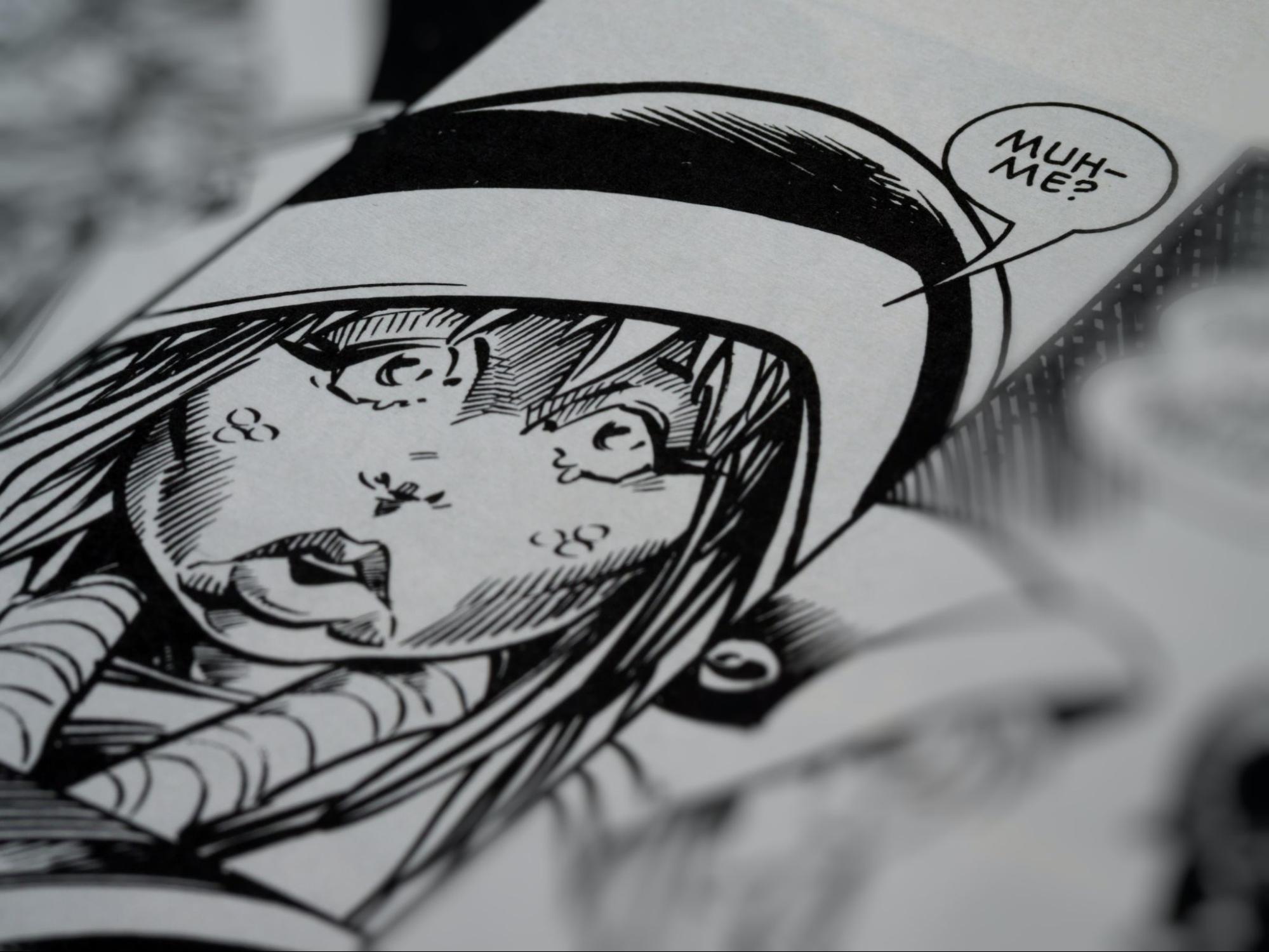How to Publish a Graphic Novel

The first graphic novel I read was Frankenstein. In French. I was studying the language at the time, and this novel format helped me understand everything better. That was the moment I fell in love with graphic novels.
Given their popularity, I can say for sure that many readers feel the same.
If you're the one writing this type of novel, amazing! You're already a beloved author.
But you also need to know how to publish a graphic novel efficiently.
Let's get to it.
In this article, you'll find
The Difference Between Graphic Novels and Comic Books
The graphic novel is a format, not a genre. As for its genre, it can be fiction, non-fiction, history, fantasy; you name it. A graphic novel relies on visual storytelling that pairs short text and images placed in panels.
So you see, the format is very much like a comic book.
However, a graphic novel is usually a stand-alone story. This makes a graphic novel more extensive, unlike comic books, which break the story across serialized issues.
Publishing or self-publishing comics is similar to publishing or self-publishing a graphic novel.
Today, we'll focus on how to publish a graphic novel.
How to Publish a Graphic Novel: 7 Steps
Choose between self-publishing and traditional publishing
Given the popularity of self-publishing these days, you have two options when it comes to publishing your graphic novel: traditional publishing or self-publishing.
You can go the traditional route and work with a publishing company. Many independent graphic novel publishers accept submissions directly from authors. We’ve compiled a list of graphic novel publishers here.
Or you can choose to have an indie graphic novel through self-publishing.
Before making a choice, weigh all the pros and cons of both publishing methods and see which one fits you.
I can name a few major differences between them. Check out our article on the subject if you wish to see a more detailed version.
Traditional publishing
Pros
- A publisher will support you and take care of the production costs.
- A publisher handles the distribution of your graphic novel.
- No upfront costs for you.
Cons
- A publisher owns the rights to your graphic novel, and it may dictate the creative direction.
- It may take a long time until your book gets published.
- You will earn fewer royalties than with self-publishing.
Self-publishing
Pros:
- Get around 60-70% royalties from each book sold, depending on the online store you are selling in.
- You set the creative direction of your book, as you own the rights.
- Publish whenever you want and feel ready; you don’t have to wait for anyone’s approval.
Cons:
- You need upfront money for the production costs.
- You must take care of the book promotion and make your graphic novel stand out, as it can be a saturated market.
Gather your team and create the novel
A graphic novel requires more than a writer. If you’re wondering how to get a graphic novel published, know that you need an entire team behind you.

There are a few reasons for that. Some of them are quite obvious, like the illustrations. If you're not an illustrator and want unique designs that you can't get with a graphic novel creator software, you need a professional to help you.
If you want to submit your graphic novel to a publisher, you need an entire creative team to help you. For example, Dark Horse comics don't even consider writer-only proposals.
A graphic novel needs:
A writer (you) comes up with the story: plot, settings, and characters. You can even create a visual storyboard to help your collaborators. The storyboard outlines your ideas visually.

Then you’ll need an editor to offer you feedback and change the parts that need changing.
Your text needs to be translated into panel illustrations by a skilled artist (or illustrator) that understands the ins and outs of your text. They need to know how to interpret your text visually. Graphic novels are all about text enhanced with illustrations. So this one's important.
Then, a colorist takes the sketches from the illustrator and adds colors to them. While some colorists may go the traditional way and use brushes and dyes, most of them choose Adobe Photoshop or Illustrator.
The only missing piece from here is a letterer. They convey the story via typefaces, sizes, and calligraphy. Your graphic novel’s speech balloons are their thing.
Choose the format
Another decision you'll have to make is regarding the format. You can choose between publishing your graphic novel digitally or in print.
But the first step will help you with this. Once you decide where to publish your graphic novel (through a traditional publisher or self-publishing platform), you'll know which is the best format for your graphic novel.
Through traditional publishers, your book will be distributed physically to bookstores.
If you go with self-publishing, you'll choose the ebook format and print-on-demand, which is a big plus when it comes to printing costs. You'll also save time and paper by printing copies only when needed.
If digital publishing is for you, you'll have to format your ebook by yourself. Keep in mind the formatting your ebook needs to look good. There are two types of formatting: reflowable and fixed. For graphic novels, you need a fixed configuration. This will ensure the same format throughout the devices.
You can do it in Google Docs, Word, Pages, or ebook software.
Fundraise for upfront costs
If the costs of gathering your team and self-publishing your graphic novel are too high, you can get on a crowdfunding platform like Kickstarter and ask for help from freelance designers. There’s an entire section dedicated to Comics & Illustration. Or you can get into their Forward Funds project and gather money for your book.
Get an ISBN
If you want an online graphic novel, you don't need an ISBN. However, if you want to distribute it to bookstores, you need one.
The 10- or 13-digit code gives your book a unique fingerprint that allows publishers, book dealers, and librarians to find it.
Register for an ISBN to get your unique identifier. If you're self-publishing, the platform or aggregator will most likely assign a code to you that is accepted by most retailers.
Publish your graphic novel
Once you have everything ready, all you need to do is publish your graphic novel.
How to self-publish your graphic novel
Are you done with writing and formatting your ebook? Have you picked a self-publishing platform that fits your needs?
Then, go to the platform and get your graphic novel online. The self-publishing platform will help you distribute your book to online bookstores. Some will even offer print-on-demand options for your graphic novel printing needs.
How to publish a graphic novel traditionally
This might be a bit challenging because you need to get accepted by a publishing house.
Here’s what you need to do:
Make a compelling pitch
A pitch contains the work you want to get published and a short bio. Make sure to include a good project overview with:
- Full synopsis
- Characters
- Genre
- Length
- Target audience
- A sample of a page with text and illustrations
Find an agent
Most traditional publishers won't accept submissions coming directly from writers. It's better to find an agent that'll send the pitch for you. An agent will also help you edit the manuscript, negotiate with publishing houses, and do other steps before publishing to increase your chances of getting accepted.
Start promoting it
No matter which road you wish to take in publishing your graphic novel, promoting your book is absolutely essential because:
- If you publish traditionally, the agent won't do it for you or will do minimal work.
- If you self-publish your graphic novel, you need to get noticed in a crowded online space.
Luckily, we live in the digital age, and authors can promote their books through social media or other creative marketing tactics.
Also, if you haven't done it already, you need to create an author website and start working on your author brand to consolidate your presence online.
Wrapping Up
There you have it. This is how you can publish your graphic novel.
If you’ve already finished it but no graphic novel publisher responded to your pitch, keep in mind that there are self-publishing platforms ready to guide your process, distribute your book wide, and promote it.